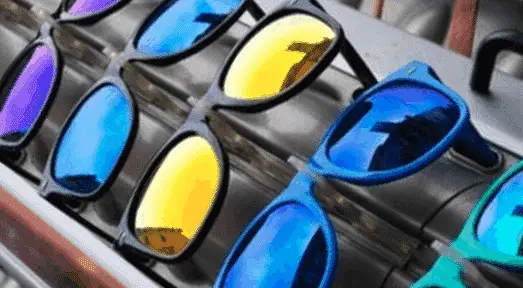Every year the hiking season brings out a whole new class of hikers excited to explore local trails and soak in the local wilderness. This is a whole new world of trail lingo and unusual gear that they have no idea what to do with.
You can really get sucked into all the newest and greatest gear if you’re not careful. For such a relaxed hobby there sure is a lot of gear. Do you really need a new pair of sunglasses to go hiking or will your polarized driving glasses suffice? Does lens color really make that much of a difference to justify buying a new pair of sunglasses?
What’s The Best Sunglass Lens Color For Hiking?

Coming from a football background it was always hard for me to gauge whether or not I was becoming a better backpacker. Hikes were getting easier and my pack was getting lighter, but you always feel like you can further optimize your gear.
My purchases have always been focused on minimizing risk and protecting my body from injury, but I never really focused on protecting my eyes. This led me down the old optimization rabbit hole searching for the right pair of sunglasses for every occasion.
From reducing the weight of my frames to anally obsess with the lens color I finally found glasses that would work for me. So what color should hiking sunglasses be?
I’ve found that amber, orange and gray tints work best for everyday use. These tints really knock down the glare and brightness regardless of the season. On low-light morning hikes you might want to switch to a yellow lens, but that really isn’t necessary.
Instead of buying multiple pairs of sunglasses you might want to get one good pair with swappable lenses. You can usually swap the lenses out in 30 seconds or less. Just make sure you have a cleaning cloth handy because there’ll be lots of finger prints.
When to Use Other Sunglass Tints
Tints really don’t effect the protection of your eye, but some tints do a better job at blocking out light. By intelligently selecting sunglass tints you can actually enhance overall vision and colors in certain situations.
Remember that although a certain color might look good, who knows if it will actually fit your needs. Here’s a handy guide for when you should use the most common tints.
- Amber and Brown: If you live somewhere like me and the sky is overcast most of the year stick to amber or brown hues. By blocking blue light these tints can increase contrast and really brighten up your vision on cloudy days.
- Gray: Gray is basically a neutral pallete allowing your eyes to see pure color while still reducing brightness and glare. Gray sunglasses will offer the most natural view on a hike.
- Orange and Yellow: Orange and yellow lenses work best in low light conditions. Although the color will be slightly distorted objects will appear sharper and actually look clearer.
- Rose and red: Red tints are great for really long hikes when your eyes are under serious strain. That’s why red and copper glasses are so popular among drivers because it really helps with visibility when driving into the sun.
- Green: Green lenses are more of an all around lens that really brightens up your view in dim light. These are great for technical sports where contrast is key but I wouldn’t recommend them for hiking.
- Blue and Purple: These lenses slightly reduce glare, but they’re mainly just fashionable and cosmetically appealing. They work well in snow and fog but that’s about it.
Do They Need to Be Polarized?
As a fisherman I always prefer polarized sunglasses, but it’s really only important around water. Hiking sunglasses really don’t need to be polarized, but it’s not going to hurt.
Polarized glasses cut down glare on water, but they really don’t make all that much difference on dry land. They might cut down glare a bit but you lose some contrast so it’s basically a wash.



